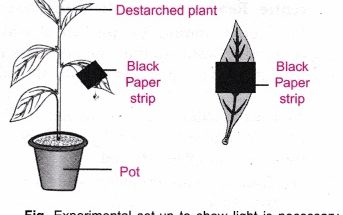Nutrition is a vital process for all living organisms, including plants. As primary producers, plants play a crucial role in the ecosystem by converting sunlight into energy-rich food through the process of photosynthesis. Proper nutrition is essential for their growth, development and overall health.
In this Nutrition in Plants chapter detailed notes , we will explore the importance of plant nutrition and look at different aspects of their nourishment. Starting with understanding the miraculous process of photosynthesis, where chlorophyll captures sunlight to synthesise food, to exploring different modes of nutrition like heterotrophic, parasitic, insectivorous and saprotrophic, as well as the fascinating symbiotic relationship with lichens.
Also Check – Rapid Revision – Class 7 Science -Chapter 1- Nutrition in Plants – Complete Notes
Table of Contents
Definition Nutrition in Plants
Nutrition in plants refers to the process by which plants obtain and utilise essential substances for their growth, development and metabolic activities. It involves the absorption, assimilation and utilisation of nutrients necessary for the survival of the plant.
Proper nutrition is vital for plants because it provides them with the necessary energy, building materials and nutrients to carry out essential functions such as photosynthesis, respiration and reproduction. It also affects the overall health, strength and resistance of plants to diseases and environmental stresses.
Different Types of Nutrients Required by Plants
Plants require different types of nutrients for their growth. These nutrients can be broadly divided into two categories –
- Macronutrients
- Micronutrients.
Macronutrients are needed in relatively large quantities, while micronutrients are required in smaller quantities.
Macronutrients
- Carbon (C)- It is the key element for building organic compounds, including carbohydrates, proteins, fats and vitamins.
- Hydrogen (H) and Oxygen (O)- These elements are crucial for the formation of water and organic compounds.
- Nitrogen (N)- It is important for the synthesis of proteins, enzymes and chlorophyll.
- Phosphorus (P)- It is necessary for energy transfer, DNA, RNA and ATP synthesis.
- Potassium (K)- It plays a role in osmoregulation, enzyme activation and protein synthesis.
- Calcium (Ca)- It is required for cell wall formation, membrane stability and enzyme activation.
- Magnesium (Mg)- It is an essential component of chlorophyll and is involved in photosynthesis.
Micronutrients
Iron (Fe), Zinc (Zn), Copper (Cu), Manganese (Mn), Molybdenum (Mo), boron (B) and Chlorine (Cl)- These micronutrients are essential for enzyme activation, electron transport and various metabolic reactions in plants.
Explanation of Mineral Requirements for Plant Growth
Minerals play an important role in plant growth and development. They are absorbed by plants from the soil through their roots. Each mineral nutrient serves specific functions in plants.
- Nitrogen (N)- It is necessary for the synthesis of amino acids, proteins, enzymes and chlorophyll. Nitrogen deficiency leads to stunted growth and yellowing of the leaves.
- Phosphorus (P)- It is involved in energy transfer, DNA, RNA and ATP synthesis. Phosphorus deficiency causes poor root development and delayed maturity.
- Potassium (K)- It plays a crucial role in osmoregulation, enzyme activation and protein synthesis. A deficiency of potassium leads to weak stems and reduced resistance to diseases.
- Calcium (Ca)- It is important for cell wall formation, membrane stability and enzyme activation. Calcium deficiency leads to poor root growth and blossom end rot in fruits.
- Magnesium (Mg)- It is a component of chlorophyll and is necessary for photosynthesis. Magnesium deficiency leads to yellowing of the leaves.
- Other micronutrients- Iron, Zinc, Copper, Manganese, Molybdenum, Boron, and Chlorine are required in smaller quantities, but are equally important for various metabolic functions and enzyme activities.
Photosynthesis
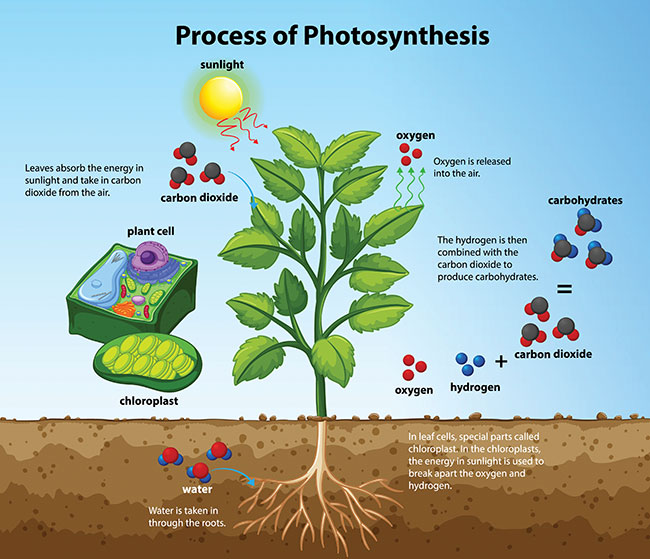
Definition and Explanation of Photosynthesis
Photosynthesis is the process by which green plants, algae and some bacteria convert light energy from the sun into chemical energy in the form of glucose. It is a complex biochemical process that takes place in the chloroplasts of plant cells.
During photosynthesis, carbon dioxide (CO2) from the air and water (H2O) from the soil are converted into glucose (C6H12O6) and oxygen (O2). This process takes place in two main stages- the light-dependent reactions and the light-independent reactions (also known as the Calvin cycle).
Also Check – Nutrition in Plants – Class 7 Questions with Answers Worksheet
The Importance of Chlorophyll in Photosynthesis
Chlorophyll is a green pigment found in chloroplasts, which are specialised organelles responsible for photosynthesis. Chlorophyll plays a crucial role in capturing light energy from the sun. It absorbs light energy from the blue and red regions of the electromagnetic spectrum and reflects green light, giving plants their characteristic green colour. This absorbed light energy is then used to power the chemical reactions of photosynthesis. Chlorophyll molecules are arranged in specific structures called photosystems. These contain proteins and other pigments that work together to convert light energy into chemical energy.
Sunlight as the Essential Source of Light for Photosynthesis
Sunlight is the primary source of energy for photosynthesis. It provides the necessary light energy that the chlorophyll pigments can absorb and convert into chemical energy. Sunlight consists of different wavelengths, including visible light. Plants particularly absorb light in the red and blue range of the spectrum, while green light is reflected or transmitted, giving plants their green appearance. The absorbed light energy is used to power the light-dependent reactions of photosynthesis, in which water molecules are split, releasing oxygen and producing energy-rich molecules such as ATP (adenosine triphosphate) and NADPH (nicotinamide adenine dinucleotide phosphate). These energy carriers are then used in the light-independent reactions to convert carbon dioxide into glucose.
It is important to know that photosynthesis not only provides plants with energy, but also produces oxygen as a by-product, which is essential for life on earth. In addition, photosynthesis is responsible for converting light energy into chemical energy that is stored in glucose, which serves as a source of food and energy for all organisms in the food chain, directly or indirectly.
Also Check – Class 7- Chapter 1 – Nutrition in Plants – 4 Worksheets Solved and Unsolved
The Food Making Process in Plants
Stomata and Their Role in Gas Exchange

Stomata are tiny openings found on the surfaces of leaves, stems and other plant organs. They play a crucial role in the exchange of gases between plants and the environment. Each stoma consists of two specialised cells, called Guard cells, that surround an opening known as the stomatal pore. The stomata control the entry of carbon dioxide (CO2) for photosynthesis and the exit of oxygen (O2) and water vapour (H2O) during transpiration. When the guard cells take up water, they become turgid, causing the stomatal pore to open. This allows carbon dioxide to enter the leaf for photosynthesis. Conversely, the guard cells become flaccid when they lose water, causing the closure of the stomatal pore, reducing water loss through transpiration.
Also Check – Steps of Photosynthesis
Process of Transpiration and Its Connection to Photosynthesis
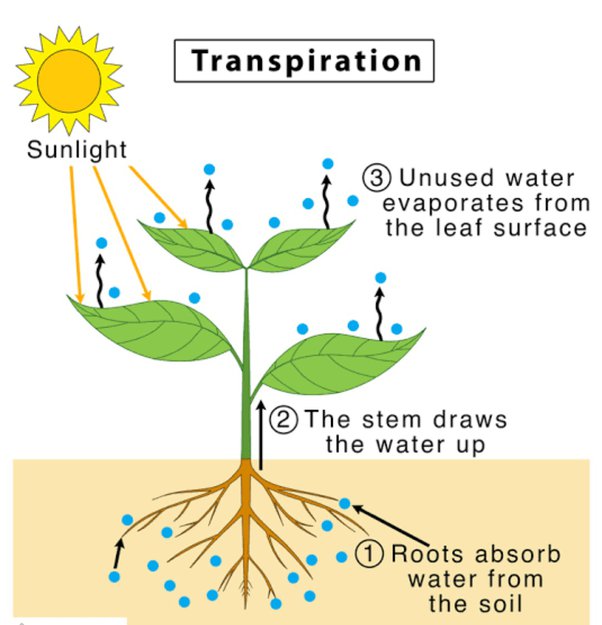
Transpiration is the process by which plants lose water vapour through their leaves. It occurs mainly through the stomata. Transpiration performs several important functions in plants. First, it helps cool the plant through evaporative cooling. Second, it creates a traction force known as Transpiration pull, which aids the upward movement of water and minerals from the roots to the leaves through the xylem vessels. Thirdly, transpiration facilitates the transport of nutrients and minerals throughout the plant. And finally, it maintains the turgidity and shape of the plant cells.
The process of transpiration is closely connected to photosynthesis. During photosynthesis, plants open their stomata to allow the entry of carbon dioxide. This leads to a loss of water vapour through transpiration. However, this loss of water is necessary for the plant to maintain the concentration of carbon dioxide in the leaf required for efficient photosynthesis. Transpiration also helps to transport water and minerals from the roots to the leaves, where they are needed for various metabolic processes.
Absorption of Water and Minerals Through Roots
- The roots play an important role in absorbing water and minerals from the soil. They have numerous tiny finger-like projections called root hairs that greatly increase the surface area for absorption. The process of water and mineral absorption takes place through the specialised cells of the roots.
- Water absorption occurs through a process called osmosis. The root hairs create a concentration gradient by actively transporting mineral ions from the soil into the root cells. This increases the concentration of solutes in the root cells, allowing water from the soil to enter the roots by osmosis.
- Mineral absorption, on the other hand, occurs through active transport and passive diffusion. Active transport involves the movement of mineral ions against the concentration gradient and requires energy. Passive diffusion occurs when mineral ions moving from an area of higher concentration to an area of lower concentration without requiring energy.
- Once water and minerals have been taken up by the roots, they are transported upwards through the xylem vessels to the rest of the plant. This upward movement is, as already mentioned, driven by the transpiration pull .
Also Check – 7 IMPORTANT FACTORS AFFECTING PHOTOSYNTHESIS
Photosynthesis Equation
Explanation of the Photosynthesis Equation
The Photosynthesis Equation represents the overall chemical reaction that takes place during photosynthesis. It can be expressed as –
6CO2 + 6H2O -> C6H12O6 + 6O2
In this equation, the reactants are carbon dioxide (CO2) and water (H2O), and the products are glucose (C6H12O6) and oxygen (O2). The numbers in front of each molecule represent the balanced coefficients, which indicate the relative amounts of each substance involved in the reaction.
Conversion of Carbon Dioxide and Water into Glucose and Oxygen during Photosynthesis
During photosynthesis, plants use light energy from the sun, chlorophyll and other pigments to convert carbon dioxide and water into glucose and oxygen.
Carbon Dioxide (CO2)
Plants get carbon dioxide from the air through tiny openings called stomata, which are mainly on the leaves. Carbon dioxide is a gas that is essential for photosynthesis. In the equation for photosynthesis, 6 molecules of carbon dioxide (6CO2) are needed as reactants.
Water (H2O)
Plants absorb water from the soil through their roots. Water is necessary for photosynthesis because it provides the hydrogen atoms needed to build glucose molecules. In the equation for photosynthesis, 6 molecules of water (6H2O) are needed as reactants.
Glucose (C6H12O6)
Glucose is a simple sugar and the main product of photosynthesis. It serves as an energy-rich molecule that fuels various metabolic processes in the plant. The chemical formula for glucose is C6H12O6 and represents the sugar molecule produced during photosynthesis.
Oxygen (O2)
Oxygen is a by-product of photosynthesis. It is released into the atmosphere as a waste product. In the photosynthesis equation, 6 oxygen molecules (6O2) are formed by the splitting of water molecules in the light-dependent reactions of photosynthesis.
Through the process of photosynthesis, plants capture light energy and convert it into chemical energy that is stored in glucose. The oxygen released during photosynthesis is essential for life on Earth and plays a crucial role in the respiratory processes of organisms.
Also Check – Importance of Photosynthesis
Synthesis of Plant Food Other Than Carbohydrates
Besides carbohydrates, plants have the remarkable ability to synthesise other essential nutrients such as proteins, fats and vitamins.
Proteins
Proteins are macromolecules made up of amino acids that are crucial for the structure and functioning of cells. Plants synthesise proteins from amino acids they produce themselves or obtain from the soil. Proteins play an important role in plant growth and development as they are involved in various physiological processes, such as the function of enzymes, cell signalling and the transport of molecules.
Fats ( Lipids )
Fats, also known as lipids, are another important class of nutrients synthesised by plants. They serve as a source of energy and are involved in various metabolic processes. Plants produce different types of lipids, including oils and waxes. Lipids play a crucial role in membrane formation, energy storage and protection from environmental stressors.
Vitamins
Plants also synthesise certain vitamins, which are organic compounds necessary for various physiological functions. Vitamins act as coenzymes or cofactors that facilitate the activity of enzymes and support metabolic reactions. Several vitamins are synthesised in plants, including vitamin C and various types of vitamin B. These vitamins are important for growth, development and defence against pathogens.
Chapter 2 – NUTRITION IN ANIMALS -Class 7 – Complete Notes
Importance of These Nutrients for Plant Growth and Development
The synthesis of proteins, fats and vitamins is essential for the general growth and development of plants.
Proteins
Proteins are the building blocks of plant cells, tissues and organs. They are involved in numerous processes such as photosynthesis, respiration and DNA replication. Proteins also play a crucial role in the regulation of plant growth hormones and defence against pests and diseases. They are necessary for the formation of new tissues and the repair of damaged tissues.
Fats ( Lipids )
Fats serve as an energy reserve in plants. In times of high energy demand, such as seed germination or growth spurts, the stored fats are broken down to release energy. Lipids are also important components of cell membranes, providing structural integrity and regulating the movement of substances in and out of cells. In addition, lipids play a role in signalling processes and insulate against temperature fluctuations.
Vitamins
Vitamins are essential for various plant metabolic pathways. They act as cofactors for enzymes and facilitate biochemical reactions involved in growth, reproduction and defence mechanisms. Vitamins also help the plant tolerate stress and play a role in the synthesis of other important compounds. For example, vitamin C is involved in the synthesis of plant hormones and acts as an antioxidant that protects plants from oxidative damage.
Other Modes of Nutrition in Plants
Heterotrophic Nutrition
Definition
Heterotrophic Nutrition is a form of nutrition in which plants obtain their food from external sources. Unlike autotrophic plants, which can synthesise their own food, heterotrophic plants rely on preformed organic matter for their nutrition. They are not capable of photosynthesis. Heterotrophic plants obtain nutrients by directly absorbing or ingesting organic substances from their surroundings.
Parasitic Plants
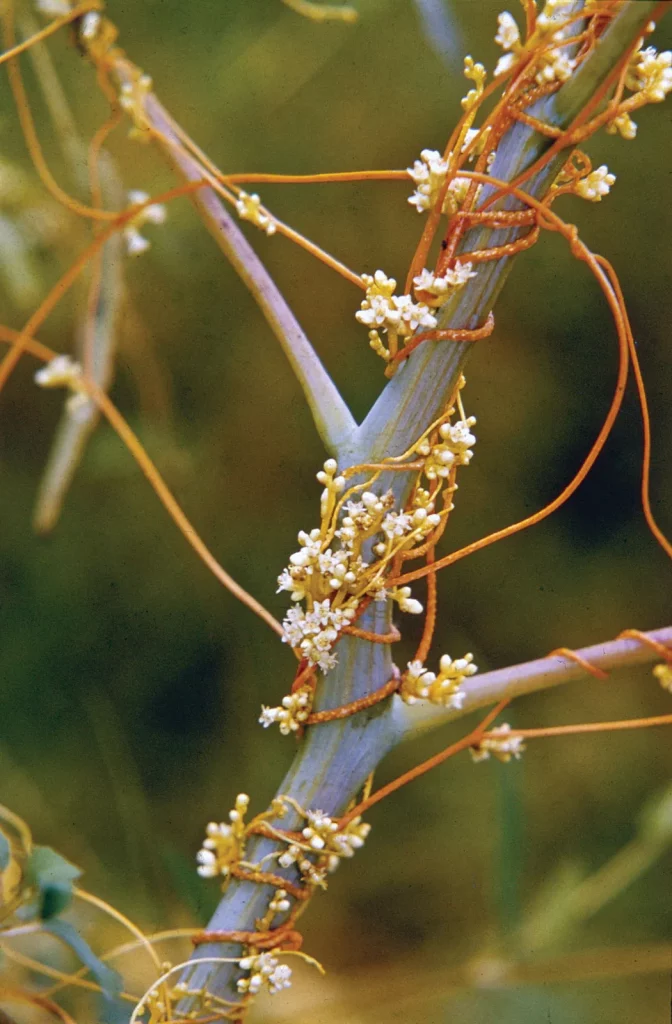
Parasitic plants are plants that obtain their nutrients from attachment to other plants, called host plants. They make connections with the vascular system of the host plant to obtain water, nutrients and other essential compounds. Parasitic plants have little or no chlorophyll and are therefore unable to perform photosynthesis effectively.
Examples of Parasitic Plants and Their Adaptations
Some examples of parasitic plants are mistletoe, dodder and Rafflesia. These plants have adaptations such as specialised roots or structures called haustoria that penetrate the host plant’s tissues to obtain water and nutrients. The parasitic lifestyle allows them to survive in nutrient-poor environments.
Insectivorous(Carnivores)Plants
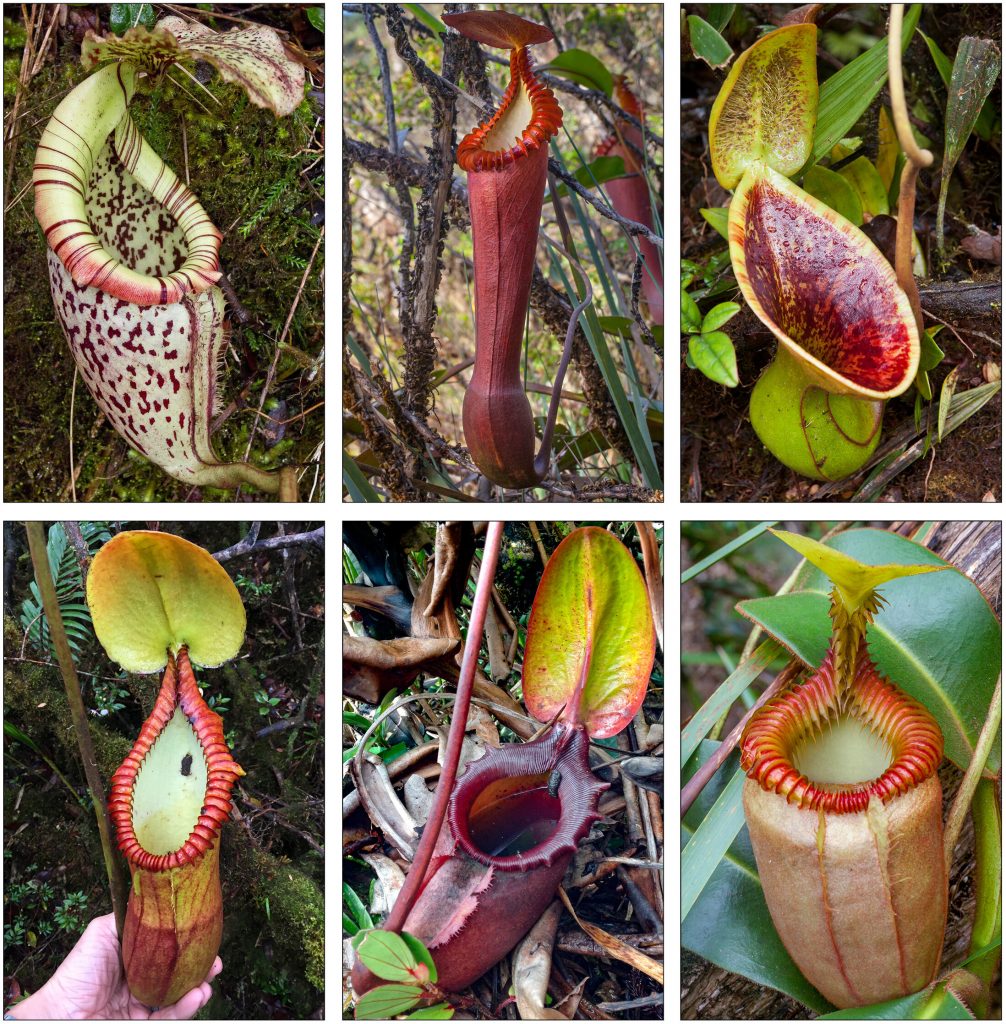
Insectivorous plants, also known as carnivorous plants, have evolved unique adaptations to capture and digest insects or other small organisms. These plants grow in habitats with nutrient-poor soils and have evolved carnivorous traits to find an alternative source of essential nutrients, especially nitrogen.
Explanation of How Insectivorous Plants Capture and Digest Prey
Insectivorous plants have specialised structures, such as modified leaves or pitchers, sticky glands or trapping mechanisms to catch their prey. Once trapped, they secrete enzymes to break down the captured organism and extract the nutrients. Examples of insectivorous plants are the Venus flytrap, pitcher plants and sundews.
Saprotrophic Nutrition
Definition
Saprotrophic nutrition is a type of nutrition in which plants obtain their food by decomposing dead organic matter. Saprotrophic plants, also known as decomposers, secrete enzymes that break down complex organic compounds into simpler substances. They absorb the resulting nutrients for their own growth and development.
Role of Decomposers in Saprotrophic Nutrition
Decomposers play a crucial role in the ecosystem by recycling nutrients and breaking down organic material. They decompose dead plants, animals and other organic materials, releasing important elements back into the soil. This process of nutrient recycling enriches the soil and makes nutrients available to other organisms, including plants.
Examples
Common examples of saprotrophic plants are fungi such as mushrooms and molds, and certain bacteria. These organisms play an important role in decomposing organic matter and maintaining nutrient balance in ecosystems.
Symbiotic Relationships in Nutrition
Symbiotic relationships are mutually beneficial interactions between different species. In the context of plant nutrition, certain plants enter into symbiotic relationships with other organisms to obtain essential nutrients.
Symbionts and Their Role in Providing Nutrition to Plants
Symbionts are organisms that form symbiotic relationships with plants. These can include nitrogen-fixing bacteria, mycorrhizal fungi or cyanobacteria. These symbionts provide nutrients such as nitrogen, phosphorus or organic compounds to the host plant and receive energy or protection in return.
Lichens and Their Mutualistic Relationship

Lichens are unique organisms formed by a symbiotic association between a fungus and an alga or cyanobacterium. The fungus provides a protective structure and absorbs water and minerals, while the alga or cyanobacterium performs photosynthesis and provides organic matter. Lichens are important pioneers in ecosystems because they can grow on bare rocks or in harsh environments and contribute to soil formation and nutrient cycling.
Transport of Food in Plants
Overview of Vascular Tissues ( Xylem and Phloem ) and Their Role in Nutrient Transport-
Plants have specialised tissues called xylem and phloem that are responsible for transporting water, minerals and food throughout the plant.
Xylem

Xylem is a vascular tissue that transports water and minerals from the roots to the rest of the plant. It consists of elongated cells called tracheary elements, which are dead cells with lignified walls. These cells are arranged end-to-end and form long tubes. Xylem relies on the cohesive and adhesive properties of water as well as transpiration to create a pull that helps the water move upwards against gravity.
Phloem

Phloem is another vascular tissue responsible for transporting food, mainly sugars, from the leaves to other parts of the plant. It consists of living cells called sieve elements, including sieve tube elements and companion cells. The sieve tube elements form sieve tubes that are connected to each other and form a transport system. The companion cells support the metabolism of the sieve tube elements.
Translocation and Its Importance in Distributing Food Throughout the Plant
Translocation is the process of moving food substances, primarily sugars, through the phloem from sources (sites of sugar production, usually leaves) to sinks (sites of sugar utilisation or storage, such as growing roots, fruits or storage tissues).
Mechanism of Translocation

Translocation occurs through a process called the pressure flow mechanism. Sugar, mainly in the form of sucrose, is actively transported from the cells of origin into the sieve tube elements. This creates a higher sugar concentration in the phloem at the source end. As a result, water moves into the phloem by osmosis, creating a high hydrostatic pressure. The pressure gradient drives the movement of sugars from the source to the sink, where they are either utilised or stored.
Importance of Translocation
Translocation plays a crucial role in the distribution of synthesised food ( primarily sugars) from the leaves, where photosynthesis takes place, to other parts of the plant that require energy for growth, respiration or storage. It ensures an even supply of nutrients to the growth regions, enabling the plant to grow, repair and reproduce. Translocation also allows the distribution of sugars for storage in fruits, seeds or storage tissues, providing an energy reservoir for later use.
Nutrient Replenishment in the Soil
Nutrient Absorption by Plants
Plants absorb minerals and nutrients from the soil through their roots. However, as plants grow and develop, they continuously take up these nutrients, which leads to a decrease in their availability in the soil.
The role of Fertilisers and Manures
Fertilisers and manures are substances that contain important nutrients such as nitrogen, potassium, phosphorus and others. These nutrients are necessary for the healthy growth of plants. By adding fertilisers and manures to the soil, farmers and gardeners replenish the nutrient content, enrich the soil and ensure that plants have an adequate supply of nutrients.
Rhizobium

Nitrogen Deficiency and the Role of Rhizobium Bacteria
Crop plants in particular have a high demand for nitrogen. As a result, the soil often becomes deficient in nitrogen. Nitrogen is abundant in the air, but plants cannot utilise it directly, as they do with carbon dioxide. Plants need nitrogen in a soluble form.
Nitrogen Fixation by Rhizobium Bacteria
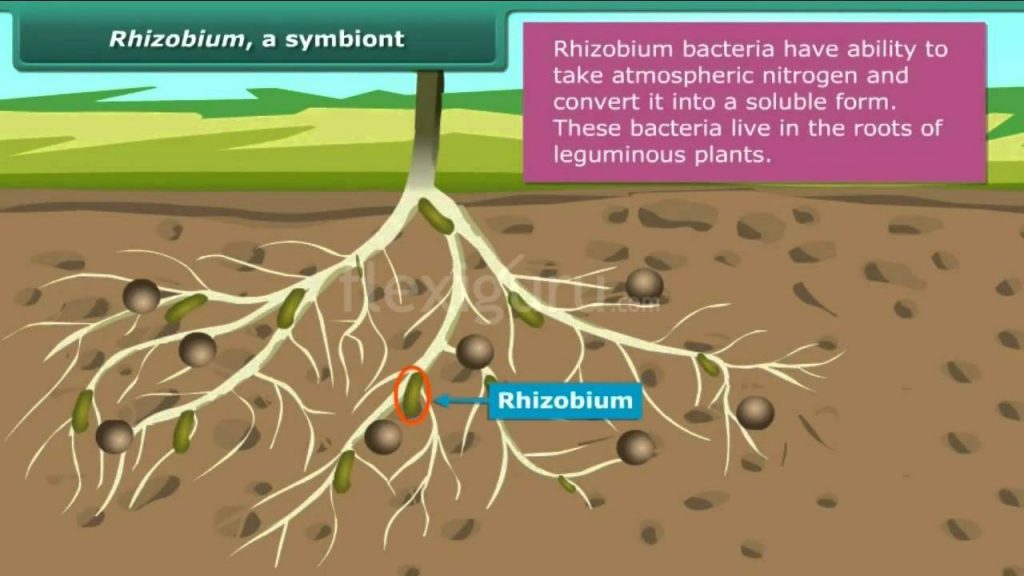
Rhizobium bacteria play a crucial role in the process of nitrogen fixation. These bacteria are able to convert atmospheric nitrogen gas into a usable form of nitrogen that plants can absorb. However, Rhizobium bacteria cannot produce their own food.
Symbiotic Relationship between Rhizobium Bacteria and Leguminous Plants
To obtain the necessary nitrogen, Rhizobium bacteria form a symbiotic relationship with certain plants called legumes. Leguminous plants, including gram, peas, moong, beans and others, provide a suitable habitat for Rhizobium bacteria in their root nodules. In return, the bacteria provide the leguminous plants with fixed nitrogen.
Significance for Farmers and reduction of nitrogen fertiliser use
The symbiotic relationship between Rhizobium bacteria and leguminous plants is of great importance to farmers. It enables them to reduce the use of nitrogenous fertilisers in fields where leguminous plants are grown. The bacteria provide a natural and sustainable source of nitrogen for the plants, reducing the need for synthetic fertilisers.
The importance of Leguminous Plants and Pulses
Legumes play a crucial role in agriculture due to their ability to form a symbiotic relationship with Rhizobium bacteria. This relationship enables leguminous plants to acquire nitrogen from the atmosphere and enrich the soil with this important nutrient. Leguminous plants are also the source of many legumes (dals), which are an important part of the human diet.
Also Check – NCERT Solutions for Class 7 Science Chapter 1: Nutrition In Plants

